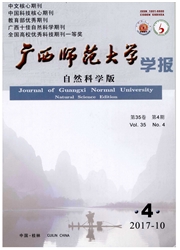

 中文摘要:
中文摘要:
城市客运交通结构是关系城市交通系统发展方向的核心问题。建立城市可持续发展的交通运输系统,不但要考虑交通出行效率目标最大化,还要使交通系统的资源消耗最小,环境污染最低,以打造低碳城市的发展模式。为了减少城市客运的碳排放,本文根据碳足迹理论,通过建立城市交通结构模型对广州市的客运交通结构进行合理优化,基于社会可持续性、经济可持续性和环境可持续性等方面的交通可持续性,以交通系统的社会效率最大化和交通系统内部成本以及环境影响最小化为约束,构建城市客运交通结构模型并进行优化,得出了2020年公交系统(轨道交通与常规公交之和)的分担比例增长至63.5%,其中轨道交通分担比例增长了近12.5%,而小汽车交通及出租车交通的分担比例都有较大程度的降低。该模型从出行特性角度出发,在考虑可持续发展的基础之上,把城市交通需求、资源、能源、环境作为约束条件,较好地体现了当今城市交通的发展态势,为城市客运交通结构优化提供理论支撑,同时根据广州市的交通发展对模型进行了实例验证,应用中取得了良好的效果。
 英文摘要:
英文摘要:
Urban passenger traffic structure is one of the key factors that determine the development direction of urban traffic system.The establishment of urban sustainable development of the transport system should not only consider to maximize the efficiency of traffic travel consider to maximize the efficiency of traffic travel but also minimize resource consumption of the transportation system and environmental pollution,to create a low-carbon urban development model.To reduce urban passenger transportation emissions,an optimized model is developed for passenger transportation structure in Guangzhou based on carbon footprint theory. Based on the social sustainability, economical sustainability and environmental sustainability, the optimized model of the urban passenger transportation structure is established by maximizing the social efficiency and minimizing the internal cost of transportation system and its environmental influence.It is indicated that the proportion of the public transportation system(rail transit and conventional bus)will increase to 63.5%.The proportion of rail transportation has increased by nearly 12.5%,while the proportion of the traffic and taxi traffic has a large degree of reduction.From the perspective of travel characteristics,the model is built on the basis of sustainable development,the urban traffic demand,resources,energy and environment.At the same time,according to the traffic development of Guangzhou City,the model is verified,and better effect is obtained.
 同期刊论文项目
同期刊论文项目
 同项目期刊论文
同项目期刊论文
 期刊信息
期刊信息
